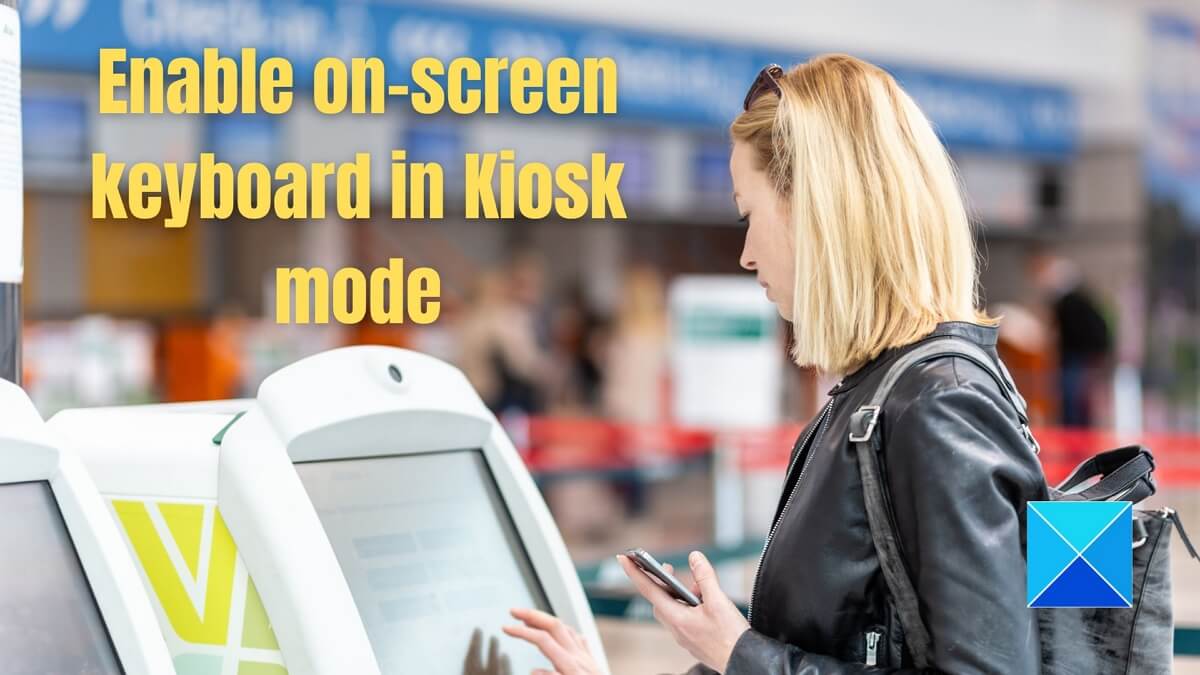Enable On-screen Keyboard in Kiosk mode in Windows 11/10
Follow these methods to enable the On-screen keyboard in Kiosk mode. Usually, the keyboard should appear automatically when you tap on a text box, but if it doesn’t, these should help resolve the problem. Two of these methods modify the registry. Ensure to create a System Restore point. So in case something goes wrong, you can quickly restore the PC. Also, you will need an account with admin permission.
1] Registry Method
The registry method is a one-time setup that will ensure no further change is required. So even if you reboot the PC into Kiosk mode, it will work as expected.
Use keyboard shortcut Win + R to open the Run promptType regedit and press the Enter key.Find and set the three registry settings to set up the keyboard as given below:Go to the following location
Right-click on the right section, and create a new DWORD with EnableDesktopModeAutoInvoke. Double-click to edit it, and set the value as 1Again, create a new DWORD with the name DisableNewKeyboardExperience. Double-click to edit it, and set the value as 1.Next, go to the following location:
Create a new DWORD—TabletMode and set the value as 1.Once done, restart the Windows PC, and check if the keyboard starts appearing.
2] Add Registry Details at Logon
If the registry changes are not holding, something resets every time the Kiosk user logs in. Then the registry changes need to be made as soon as the user gets access to the account. Create Registry File Add these in a TXT file, and keep it in a place on your PC where you will not delete it. Make sure to save the file as enabletouchkeyboard.bat Create Task
Open Run prompt using Win + RType taskschd.msc and press the Enter keyRight-click on the Task Scheduler Library and select Create TaskIn the Task Scheduler window, switch to the General tab, and then under Security options, select Run only when the user is logged on.Click on Change User or Group, and select the KIOSK user.Switch to the Triggers tab, and click on NewIn the New Trigger window, click on the dropdown next to the Begin the task label.Then select the Specific user radion button, and select the Kiosk user. Close this, and then switch to the Actions tab of Create taskThen click on New to open the New Action windowNext, click on the dropdown next to Action, and select the Start a program option.Then click on the Browser button, select the BAT file and click on the OK button.Save the changes, reboot the PC, and it should solve the problem
3] Setup Keyboard during Setup
One forum user suggested setting up a tablet configuration after logging in when the physical keyboard is disconnected. To get started, first create a dedicated user for the Kiosk mode, and then choose tablet configuration after logging in as this user.
Next, you must create assigned access with this local user kiosk and restart. This shows up when setting up a single-app Kiosk. You can use the Set up a kiosk (previously named Set up assigned access) option in Settings to set up a single device as a kiosk for a local user account. It will also work for Microsoft Edge.
One of these methods will help resolve the problem. I hope the post was easy to follow and you were able to enable the on-screen keyboard in Kiosk mode in Windows.
How do I open the on-screen keyboard?
Go to Settings (Win + I) > Accessibility > Keyboard, and toggle on the On-Screen Keyboard. The screen will display a keyboard that can be used to navigate and type text. Until you shut the window, the keyboard will be visible on the screen.
How do you enable or disable the keyboard on a laptop?
It is straightforward to enable the screen keyboard to display on your laptop. Go to Settings (Win + I) and find and click Accessibility. Next, scroll down and click on Keyboard. Under Use your device without a physical keyboard, toggle on the given slide button. The keyboard will appear on your screen.

